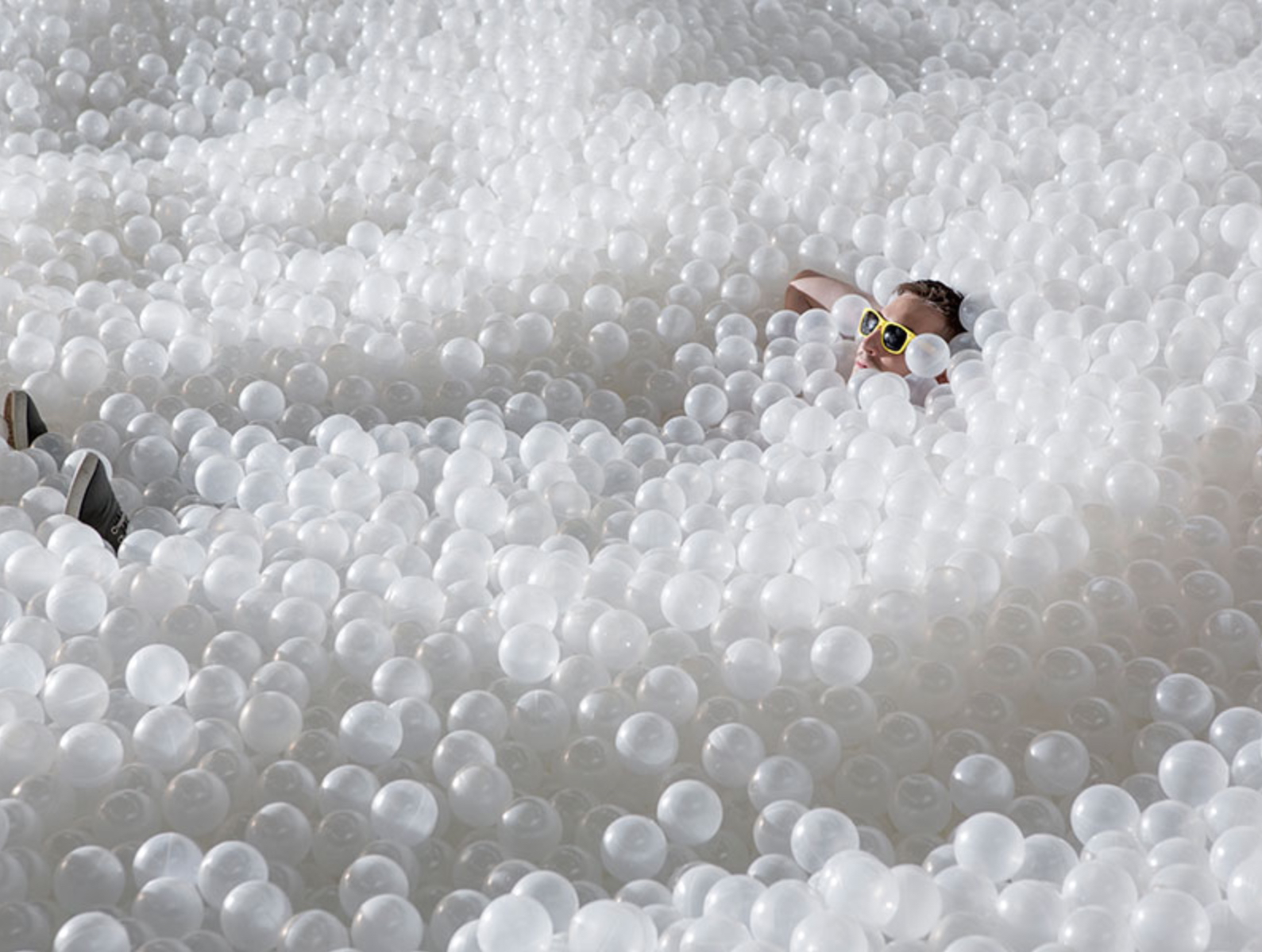Architect Magazine Ι June 15, 2015 Ι The New York firm of Alex Mustonen and Daniel Arsham injects humor (and removes color) from its products and projects.
The well-trodden intersection of art and architecture is where Snarkitecturepractices, but the New York–based studio’s uncanny spaces exist in a place “adjacent to real life.” Firm founders Alex Mustonen, who studied architecture at the Cooper Union, and Daniel Arsham, an artist, have developed a portfolio of high-end retail installations, furniture, and products that relentlessly subvert visual and material expectations. An encounter with Snarkitecture goes like this: Surprise, recognition, then self-satisfaction at solving the riddle. Then you take a photo, follow their Instagram account (as more than 130,000 already have), and maybe buy a custom key chain.
Just about all of Snarkitecture’s projects are meditations on sharp, digital replication or messy, organic excavation and subtraction. The firm’s “Drift” pavilion at Design Miami in 2012 created a reverse-topographical ceiling made out of hundreds of white inflatable tubes. Their “Dig” installation at New York’s Storefront for Art and Architecture bored a series of holes with hammers and chisels through walls made of expanded polystyrene (EPS) foam. “Dig” is probably Snarkitecture’s most direct distillation of their studio’s name, which comes from a Lewis Carroll story about a band of misfits’ quixotic hunt for a mysterious quarry, the Snark. “’Into the white,’ is how we often think of these things, says Mustonen. “Not exactly knowing where you’re going to end up, but hopefully having fun along the way.”
With its latest and largest installation, Snarkitecture combined its sharp digital and messy organic approaches into a single installation at the National Building Museum that opened earlier this month. “The Beach” sees Snarkitecture assembling a 10,000-square-foot beachside stage set that will fill the museum’s Great Hall from July 4 through Labor Day with a shifting ocean of 1 million translucent plastic balls. Here, Mustonen discusses the firm’s philosophy and upcoming work.
Minimalist Repetition
We’re very interested in the idea of reduction—of taking a concept, space, or program and really distilling it down to the bare minimum. Oftentimes, that means taking out color. It’s a level of abstraction that brings you into a space that doesn’t have all the things normally around us in our everyday environment.
Snarkitecture, Starting at $15
Our first object was a pingpong table. From that we started getting interested in smaller-scale products. What’s interesting for us is giving a much wider audience the possibility to have our work be a part of their daily life. If you’re interested in Snarkitecture but you’re not going to commission an installation, but maybe you need a candle for your home, you can have that.
Hand-Drawn Intuition
We do use digital modeling and drafting programs, but at the end of the day, we use a more analog sort of approach. We start every project by drawing by hand.
